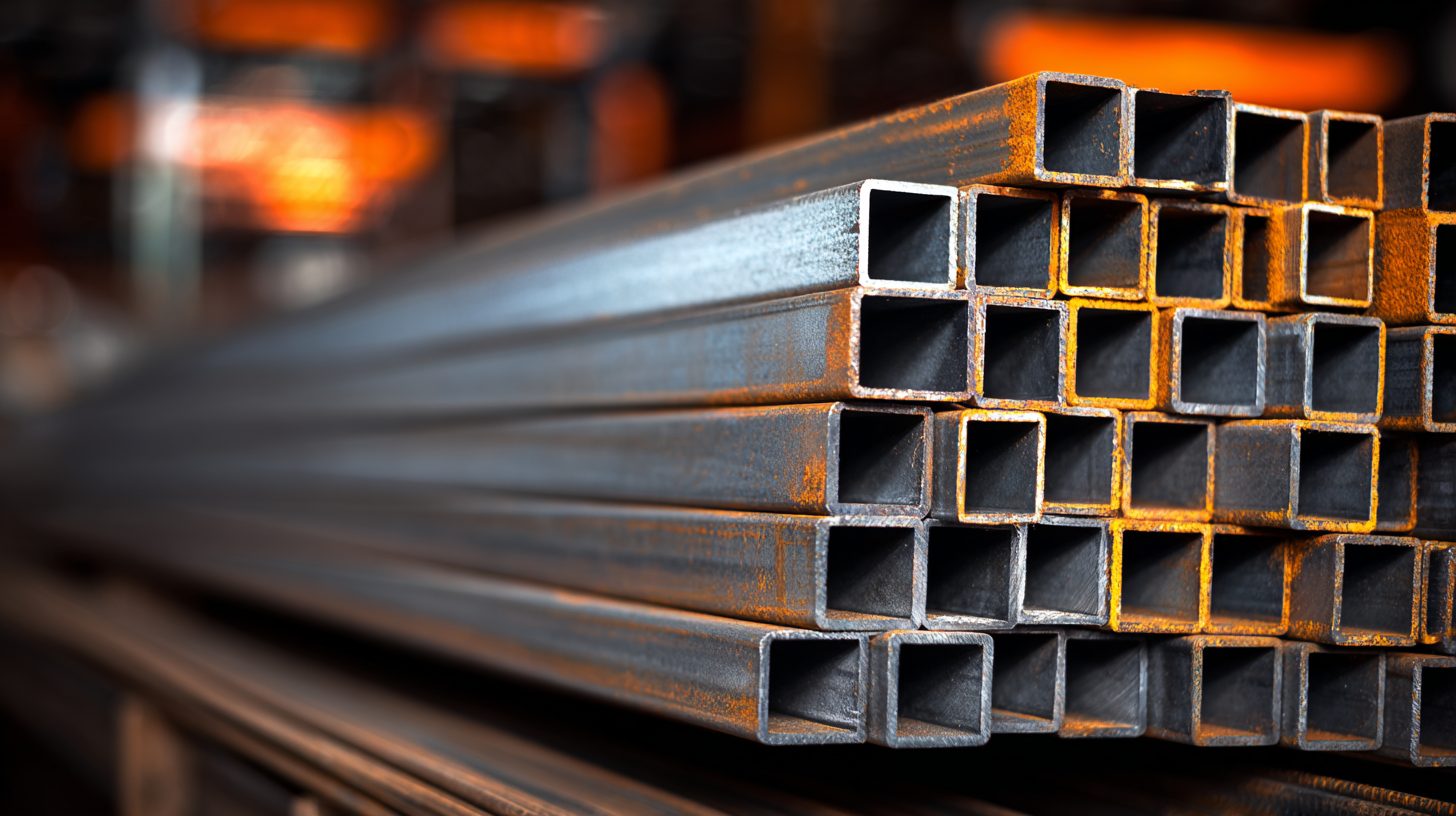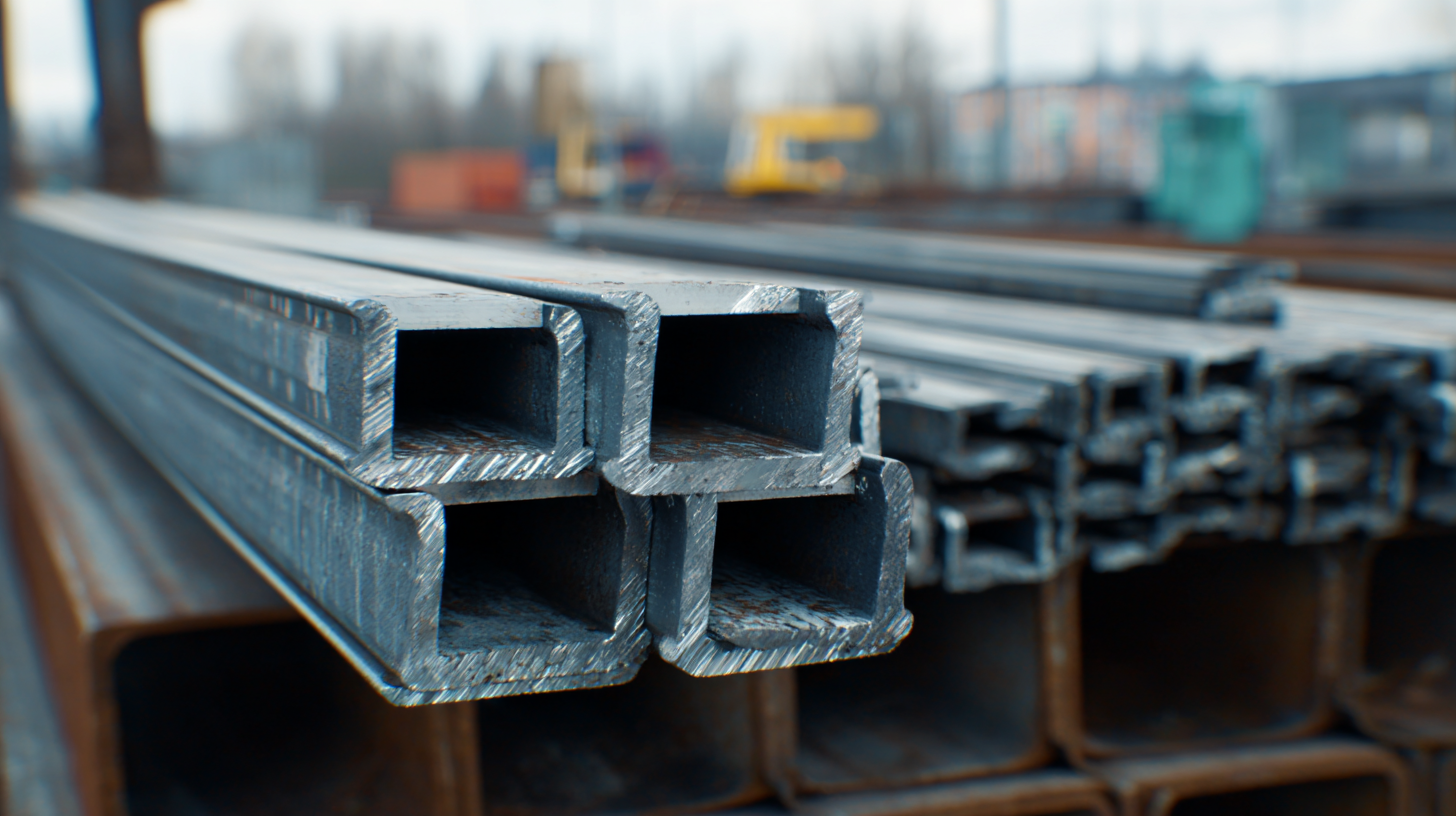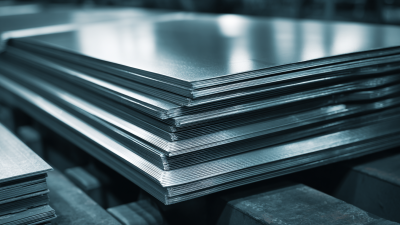Leave Your Message
-
Phone
-
E-mail
-
Whatsapp
When it comes to constructing durable and reliable structures, choosing the right steel profile is crucial. According to a report by the World Steel Association, steel accounts for approximately 75% of the total material used in construction, highlighting its significance in the industry. With various steel profiles available, including I-beams, C-channels, and angles, each serving unique structural roles, making an informed choice is imperative for engineers and builders alike. A well-selected steel profile not only ensures optimal load-bearing capacity but also contributes to the overall efficiency and sustainability of a project. Understanding the specifications, advantages, and application scenarios of different steel profiles will empower professionals to make decisions that meet both structural integrity and economic feasibility, thereby enhancing the longevity and safety of their constructions.

When selecting a steel profile for your structural needs, it is essential to understand the various types available and their specific applications. Steel profiles are categorized into several shapes, including I-beams, H-beams, channels, and angles, each serving distinct purposes in construction. For example, I-beams are ideal for load-bearing applications due to their high strength-to-weight ratio, while channels are commonly used for bracing and framing.
Tips: When choosing the appropriate steel profile, consider the load specifications and the environmental conditions of your project. If your application requires resistance to corrosion, opt for galvanized steel profiles that are treated to withstand harsh conditions. Additionally, always consult with a structural engineer to ensure your selection meets safety standards and regulations.
Beyond traditional uses, advancements in material science are expanding the scope of steel profiles. Like the development of metal and non-metal doped carbon dots in biomedical applications, materials are increasingly engineered to fulfill unique functional requirements. This innovation reflects a broader trend toward the customization of materials in various sectors, illustrating the importance of understanding both classic and cutting-edge materials in construction.
When selecting the right steel profile for structural applications, several key factors must be meticulously considered to ensure optimal performance and safety. First and foremost is the load-bearing capacity, which can be influenced by the shape and size of the steel profile. According to a 2021 report by the American Institute of Steel Construction (AISC), the structural efficiency of different profiles such as I-beams, C-channels, and square tubes varies significantly under different loads. For example, I-beams are renowned for their high strength-to-weight ratio, making them ideal for beams in large-span constructions.

Another critical consideration is the environment in which the structure will be located. Corrosion resistance is crucial; profiles made from weathering steel or those coated with protective galvanization are recommended for harsh conditions. The National Association of Corrosion Engineers (NACE) indicates that nearly 30% of structural failures are attributed to corrosion, emphasizing the importance of selecting a profile appropriate for its intended environment. Additionally, the ease of fabrication and availability of specific profiles can impact project timelines and costs, as highlighted in the 2022 Steel Industry Economic Impact report, which noted that efficient supply chain management can enhance project feasibility and reduce lead times.
When selecting the ideal steel profile for your structural projects, it's essential to understand the various types available and their specific applications. Among the most common steel profiles are I-beams, C-channels, and angle bars. I-beams are renowned for their strength and load-bearing capabilities, making them a preferred choice for large structures such as bridges and buildings. Their unique cross-sectional shape allows for optimal resistance to bending, providing superior support.
On the other hand, C-channels are versatile and commonly utilized in applications requiring lighter structures. They offer excellent resistance to torsion and are frequently used in the construction of frames and support systems. Angle bars, with their L-shaped profile, are ideal for bracing and reinforcing, providing stability and strength at connection points. By assessing the specific requirements of your project—considering factors such as load, span, and environmental conditions—you can make an informed decision on which steel profile suits your structural needs best.

When selecting a steel profile for structural applications, understanding load-bearing capacity is crucial. The load-bearing capacity determines how much weight a structure can safely support without compromising its integrity. Different profiles, such as I-beams, C-channels, and rectangular tubes, offer varying load capacities based on their shape, material thickness, and overall dimensions. Therefore, identifying the expected loads your structure will face—whether static, dynamic, or environmental—is essential in choosing the right steel profile.
The importance of load-bearing capacity extends beyond just safety; it also influences the overall efficiency of the structure. Inadequate load-bearing capacity can lead to structural failures, resulting in costly repairs and potential hazards. On the other hand, selecting a profile with an excessively high capacity may increase material costs and weight unnecessarily. Hence, engineers and architects must conduct thorough calculations and consider factors such as material properties and structural design to ensure that the steel profile chosen is not only suitable for the intended load but also optimizes performance and costs.
Choosing the right steel profile is critical not only for the structural integrity of your project but also for optimizing cost and efficiency. When assessing various steel profiles, consider their load-bearing capabilities and how they align with the specific demands of your structure. For instance, utilizing standard profiles such as I-beams or C-channels can lead to significant cost savings because they are readily available and often more economical than custom solutions. Furthermore, conducting a thorough analysis of the weight and thickness necessary for your application can help prevent over-engineering, which adds unnecessary expenses.
Another vital aspect is evaluating the connection types within your design. Selecting the appropriate profile can streamline assembly processes and improve the overall efficiency of construction. Profiles that offer ease of connection can reduce labor costs and project timelines. Additionally, consider the long-term implications of your material choices, such as maintenance and durability, which can further influence overall lifecycle costs. By meticulously analyzing these factors, you can make informed decisions that enhance both the performance and cost-effectiveness of your structural project.
| Profile Type | Dimensions (mm) | Weight (kg/m) | Strength (MPa) | Cost ($/kg) | Typical Applications |
|---|---|---|---|---|---|
| I-Beam | 200 x 100 x 10 | 24.8 | 250 | 1.50 | Buildings, Bridges |
| Channel | 150 x 75 x 6 | 11.1 | 300 | 1.70 | Support Structures |
| Angle | 50 x 50 x 5 | 6.07 | 250 | 1.80 | Bracing, Racks |
| Hollow Section | 100 x 100 x 5 | 7.85 | 300 | 2.00 | Frameworks, Supports |
| Tee | 100 x 10 | 8.5 | 260 | 1.60 | Support, Framing |






